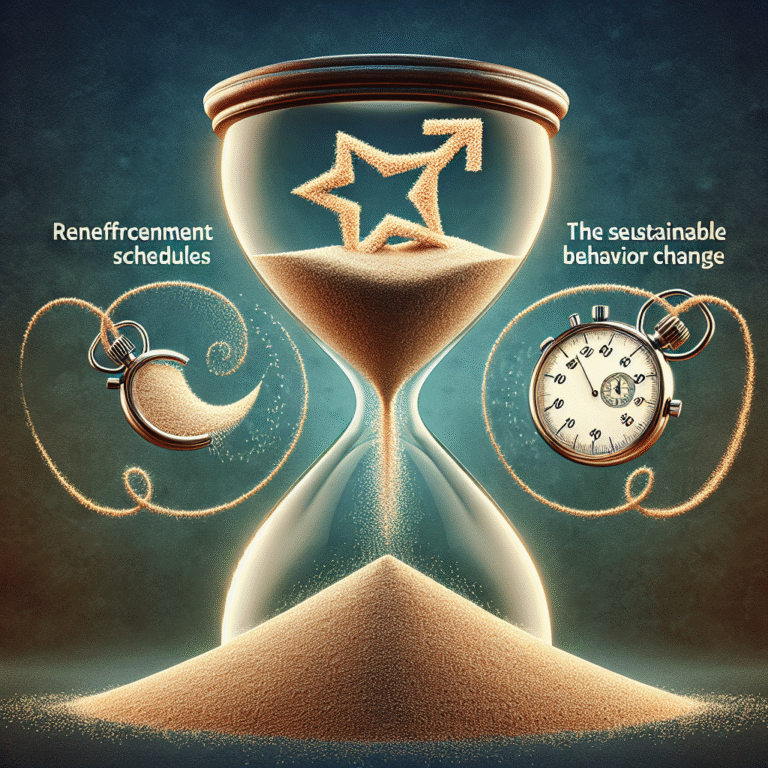
Introduction
Have you ever placed your keys in a "safe" spot only to forget where you put them moments later? This common forgetfulness isn’t just an annoyance—it highlights the intriguing complexity of our cognitive processes. Understanding the intertwining aspects of forgetfulness and function, particularly focusing on the role of short-term memory in learning, is pivotal for students, educators, and anyone looking to optimize their cognitive capabilities.
In this article, we will delve into the multifaceted relationship between forgetfulness and function, exploring how short-term memory shapes our learning experiences. From scientific theory to practical application, this exploration will not only captivate your curiosity but equip you with actionable insights into enhancing your learning processes.
The Science of Memory
What is Short-Term Memory?
Short-term memory (STM) serves as a temporary storage system that allows us to hold and manipulate a limited amount of information for brief periods—typically ranging from 20 to 30 seconds. For example, when someone gives you a phone number and you repeat it mentally until you find a pen, you’re utilizing your short-term memory.
Short-term memory consists of two main components: the phonological loop and the visuospatial sketchpad. The phonological loop processes verbal and auditory information, while the visuospatial sketchpad manages visual and spatial data. This division crucially underscores how forgetfulness can impact learning, as varied types of information require different memory strategies.
The Impact of Forgetfulness on Learning
Forgetfulness can be detrimental to learning. Whether in school or a professional setting, forgetting critical concepts can hinder progress, create confusion, and develop a sense of inadequacy. When students forget foundational concepts, it becomes challenging to grasp more complex ideas, creating a ripple effect throughout their educational journey.
This becomes particularly important in environments requiring quick retention and application of knowledge, such as during examinations or practical assessments. Addressing these challenges associated with forgetfulness and function can enhance educational outcomes.
Practical Applications of Short-Term Memory
Understanding the role of short-term memory provides valuable insights on improving learning efficiency. Below are strategies for maximally leveraging STM in various contexts:
1. Chunking Information
One effective technique to combat forgetfulness and promote learning is “chunking,” a method where we group information into larger, memorable units. For instance, when trying to memorize a 10-digit phone number, it can be broken down into segments (e.g., 123-456-7890), making it easier to recall.
Case Study: The Impact of Chunking on Students
A study conducted with college students revealed that those who used chunking techniques were significantly better at recalling the material during exams. The importance of strategies like chunking cannot be overstated; it empowers learners to utilize their short-term memory more effectively.
Analysis
By clustering related information, we engage our cognitive processes more efficiently, enhancing our ability to learn and apply new concepts in various subjects.
2. Repetition and Active Recall
The techniques of repetition and active recall capitalize on the functionality of short-term memory. Repeating information reinforces neural pathways, making it more likely to be stored in long-term memory. For instance, reviewing notes after a lecture can significantly improve retention rates.
Case Study: Active Recall in Action
In 2013, a study by Roediger and Butler demonstrated how students who engaged in active recall performed better on assessments than those who simply reviewed material passively.
Analysis
By forcing ourselves to retrieve information actively illustrates the forgetfulness and function spectrum well—active recall lessens the forgetfulness tied to insufficient memory practice.
3. Multi-Sensory Learning
Utilizing multiple senses during the learning process enhances short-term memory capacity. Engaging visual, auditory, and kinesthetic channels can create richer memory traces, thus minimizing forgetfulness.
Case Study: Integrative Learning Approaches
Research at the University of California showed that students who participated in sensory-rich activities, such as hands-on experiments or interactive apps, demonstrated higher retention rates than students using traditional methods.
Analysis
This assertion supports the idea that learning should be a holistic experience, minimizing forgetfulness through diverse engagement avenues.
4. Organized Study Sessions
Strategically organizing study sessions can tremendously impact STM’s role in learning. Structured bursts of study time, followed by breaks (known as the Pomodoro Technique), can optimize memory retention and minimize fatigue-induced forgetfulness.
Case Study: Timing and Retention
A research experiment involving high school students illustrated that those who utilized organized study sessions had better short-term retention rates than those who crammed the night before exams.
Analysis
Adequate spacing of study material reinforces memory retention and combats last-minute panic, aligning perfectly with the forgetfulness and function mantra.
Overcoming Forgetfulness: Mind Training
To truly seize the full potential of short-term memory, it is essential to engage in mind training. Here are some top practices:
Brain Exercises
Simple puzzles, memory games, and challenging tasks can sharpen cognitive function and heighten short-term memory capacity. Engaging regularly with these tasks can mitigate forgetfulness and enhance learning.
Mindfulness and Meditation
Mindfulness practices can improve focus and concentration, leading to better information retention. Studies have shown that regular meditation can positively affect short-term and working memory.
Conclusion
In an age brimming with information, grappling with forgetfulness is an all-too-common experience. However, understanding the role of short-term memory in learning unveils strategies that can counteract this challenge. By employing techniques such as chunking, active recall, multi-sensory engagement, and organized study sessions, you empower yourself with tools to optimize both your short-term memory and your overall learning function.
Remember, forgetfulness is not merely a hindrance; it is a call to explore the depths of cognitive function. Embrace the strategies we’ve discussed and take control of your learning journey. The road to mastery isn’t about how much you can retain but about how effectively you can leverage the information you acquire.
FAQs
1. What is the primary function of short-term memory?
Short-term memory temporarily holds data and allows for immediate processing, acting essentially as a workspace for information before it moves to long-term memory.
2. Why do we forget?
Forgetting may occur due to various factors, including interference (when new information disrupts existing memories), decay (loss of information over time), or retrieval failure (inability to access required data).
3. Can short-term memory be improved?
Yes! Techniques such as active recall, chunking information, and engaging multiple senses can significantly enhance your short-term memory capacity.
4. How long can information be retained in short-term memory?
Information can typically be held in short-term memory for about 20 to 30 seconds unless actively rehearsed or encoded into long-term memory.
5. How can I prevent forgetfulness during study sessions?
Organizing your study time, reducing distractions, taking breaks, and employing recall techniques can help maintain focus and minimize forgetfulness during study sessions.
In understanding the complexities of forgetfulness, we unlock new potentials for learning—showing that every moment spent dwelling on what has slipped through our fingers can instead be an opportunity to engage deeper with the knowledge that lies ahead.














